Project Management Frameworks: Expert Guide to Successful Implementation
A project management framework is a structured approach that provides a roadmap for planning, executing, and controlling projects effectively.
It encompasses a set of processes, tools, and techniques that guide project managers and teams through the lifecycle of a project, from initiation to closure.
Key Highlights
- Types of frameworks: Waterfall, Agile, PRINCE2, Lean, CPM
- Project lifecycle phases and their critical components
- Essential elements: WBS, Gantt charts, risk assessment
- Implementing frameworks: PMO role, change management, tools
- Advanced techniques: Earned Value, Kanban, iterative development
- Benefits and continuous improvement in framework adoption
Introduction to Project Management Framework
Project management framework is the backbone of successful project execution. It’s a structured approach that provides a roadmap for planning, executing, and controlling projects effectively.
The importance of a project management framework cannot be overstated.
It provides a common language and set of practices that enable teams to work cohesively, even across different departments or geographical locations.
A solid framework helps maintain consistency, improves efficiency, and ultimately delivers greater value to stakeholders.
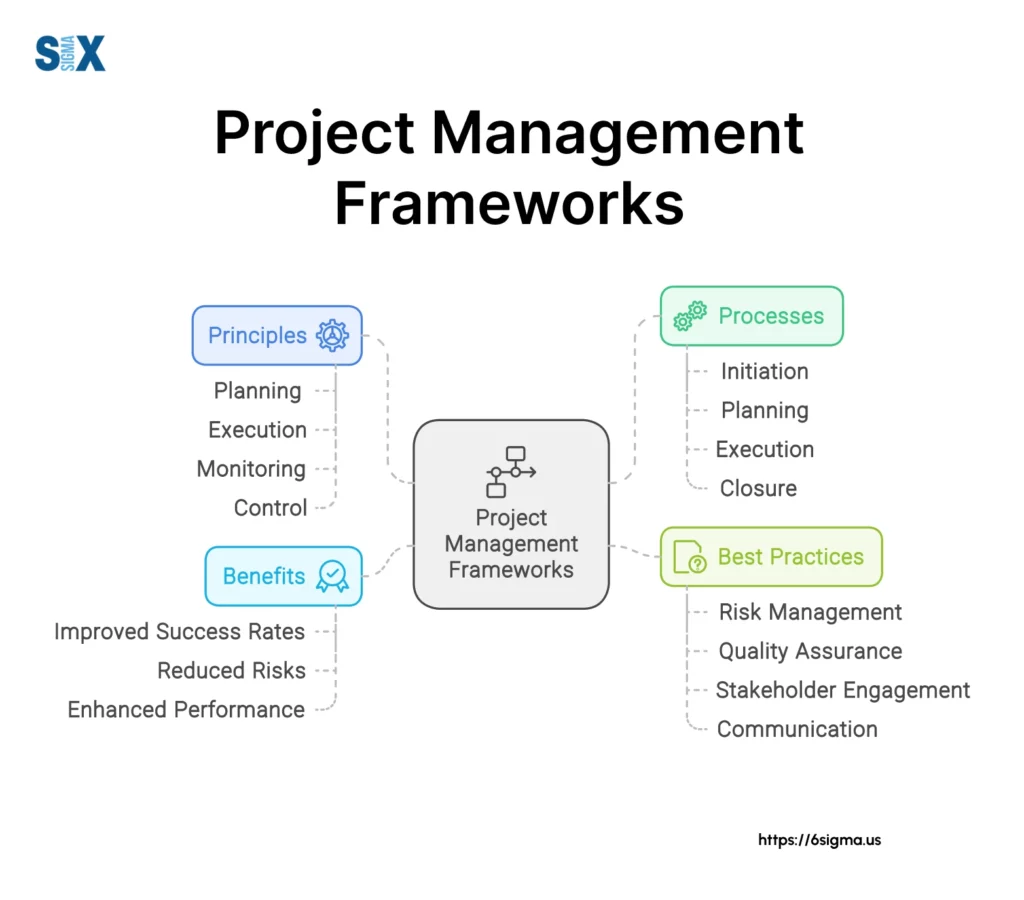
Key Components of a Project Management Framework
A robust project management framework typically consists of several key components:
- Project Lifecycle: This outlines the stages a project goes through from initiation to closure.
- Processes and Procedures: These define how various project activities should be carried out.
- Roles and Responsibilities: Clear definitions of who does what within the project team.
- Tools and Templates: Standardized documents and software to support project activities.
- Governance Structure: This establishes how decisions are made and how the project is overseen.
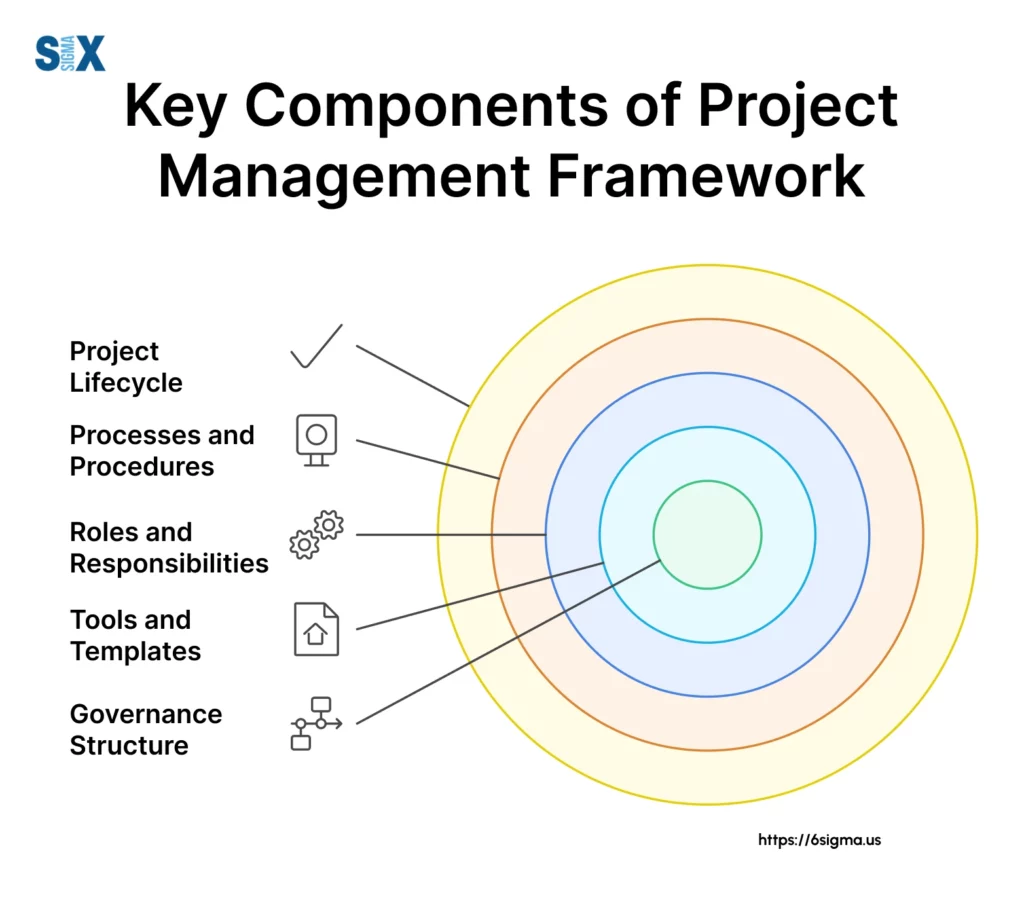
Types of Project Management Framework(s)
Project management frameworks come in various forms, each tailored to different project needs and organizational cultures.
Traditional Waterfall Model
The Waterfall model is a linear, sequential approach to project management.
As someone who started their career when this was the dominant model, I can attest to its strengths in certain scenarios.
It’s particularly effective for projects with well-defined requirements and minimal expected changes.
In the Waterfall model, each phase must be completed before the next begins:
- Requirements
- Design
- Implementation
- Verification
- Maintenance
While it can be rigid, the Waterfall model provides clear structure and is often preferred in industries like construction or manufacturing, where changes mid-project can be costly.
Agile Methodology and Scrum Framework
Agile methodology, and its popular framework Scrum, represent a significant shift in project management thinking.
In my work with tech companies like HP and Motorola, I’ve seen Agile’s effectiveness in managing complex, fast-moving projects.
Agile emphasizes:
- Iterative development
- Flexibility to changing requirements
- Continuous feedback
- Close collaboration with stakeholders
Scrum, a specific Agile framework, introduces concepts like sprints, daily stand-ups, and product backlogs.
It’s particularly well-suited for software development and other creative projects where requirements may evolve.
PRINCE2 Project Management Framework
PRINCE2 (PRojects IN Controlled Environments) is a process-based method for effective project management.
It’s widely used in the UK government and private sector. In my experience working with various government institutions, I’ve found PRINCE2 to be particularly effective for large-scale, complex projects.
Key principles of PRINCE2 include:
- Continued business justification
- Learn from experience
- Defined roles and responsibilities
- Manage by stages
- Manage by exception
- Focus on products
- Tailor to suit the project environment
Lean Project Management
Lean project management is derived from lean manufacturing principles, which I’ve extensively applied in my work with companies like 3M.
It focuses on maximizing value while minimizing waste. The core idea is to create more value for customers with fewer resources.
Key principles include:
- Identify value
- Map the value stream
- Create flow
- Establish pull
- Seek perfection
Lean can be particularly effective in industries like manufacturing and healthcare, where efficiency and waste reduction are critical.
Critical Path Method (CPM)
The Critical Path Method is a technique used to schedule project activities. It’s particularly useful for complex projects with interdependent activities.
CPM is used to identify the sequence of crucial tasks that determine the minimum time needed to complete a project.
CPM involves:
- Listing all activities required to complete the project
- Determining the dependencies between activities
- Estimating the time required for each activity
- Identifying the critical path (the longest sequence of activities)
Understanding the critical path allows project managers to focus on the most important tasks and make informed decisions about resource allocation.
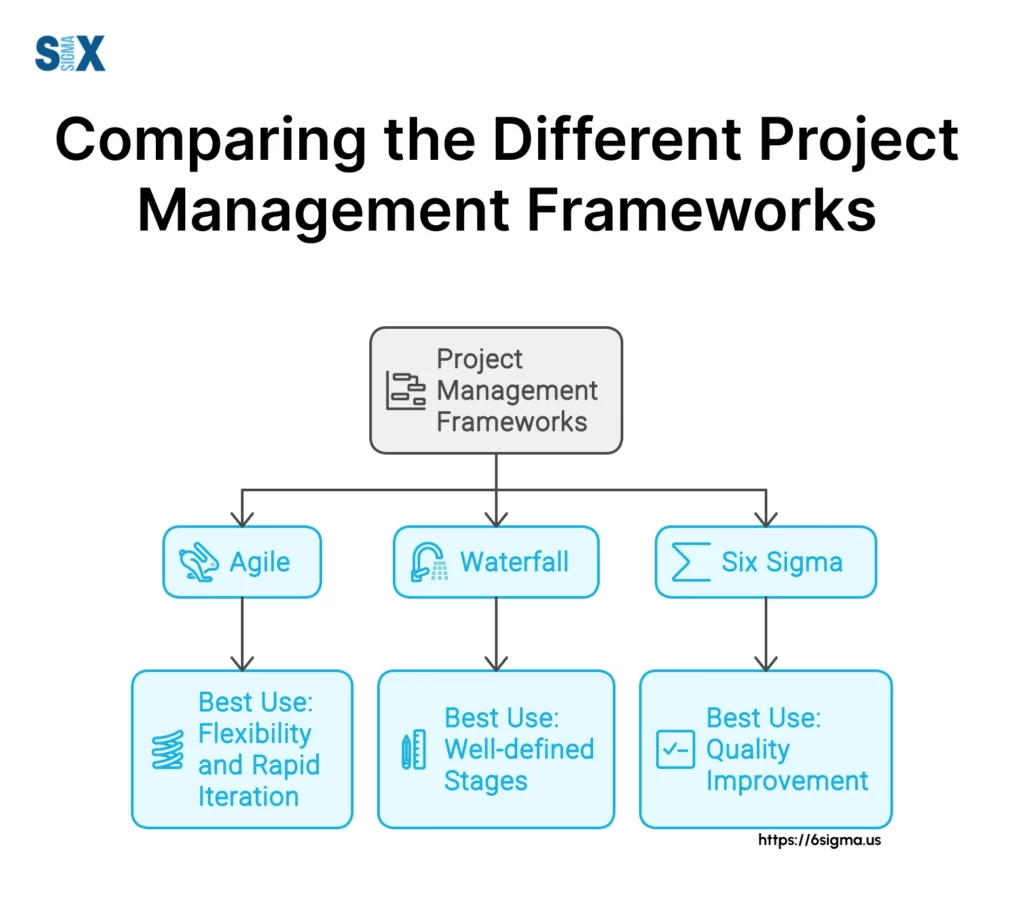
Project Lifecycle and Phases
The initiation phase is where the project’s value and feasibility are determined. As a Six Sigma Master Black Belt, I always stress the importance of this phase in setting the foundation for project success.
Key activities include:
- Developing the business case
- Conducting feasibility studies
- Identifying stakeholders
- Appointing the project manager
The culmination of this phase is the project charter, a document that formally authorizes the project and provides the project manager with the authority to apply organizational resources to project activities.
Planning and Scope Management with Project Management Framework
Planning is crucial for project success. This phase involves developing the project management plan, which includes:
- Defining and documenting scope
- Creating the Work Breakdown Structure (WBS)
- Defining activities and sequencing them
- Estimating resources and durations
- Developing the schedule and budget
- Planning for quality, human resources, communications, risk, and procurement
Effective scope management ensures that the project includes all the work required, and only the work required, to complete the project successfully.
Execution and Resource Allocation
The execution phase is where the project plan is put into action.
Key activities include:
- Directing and managing project work
- Performing quality assurance
- Acquiring, developing, and managing the project team
- Distributing information
- Managing stakeholder expectations
Proper resource allocation is crucial in this phase. It involves assigning the right people, equipment, and materials to the right tasks at the right time.
Monitoring and Project Controls
Monitoring and controlling run throughout the project lifecycle.
Key activities include:
- Monitoring and controlling project work
- Performing integrated change control
- Verifying and controlling scope
- Controlling schedule and costs
- Performing quality control
- Reporting performance
Project controls are the data gathering, management, and analytical processes used to predict, understand, and constructively influence the time and cost outcomes of a project.
Closure and Lessons Learned
Project closure is often overlooked, but in my experience, it’s crucial for organizational learning and improvement.
This phase involves:
- Closing out all activities
- Archiving files
- Releasing resources
- Conducting post-project reviews
The lessons learned process is particularly important. It involves documenting successes, challenges, and areas for improvement, which can be invaluable for future projects. Pursuing a six sigma certification can enhance a project manager’s ability to document and apply these lessons effectively.
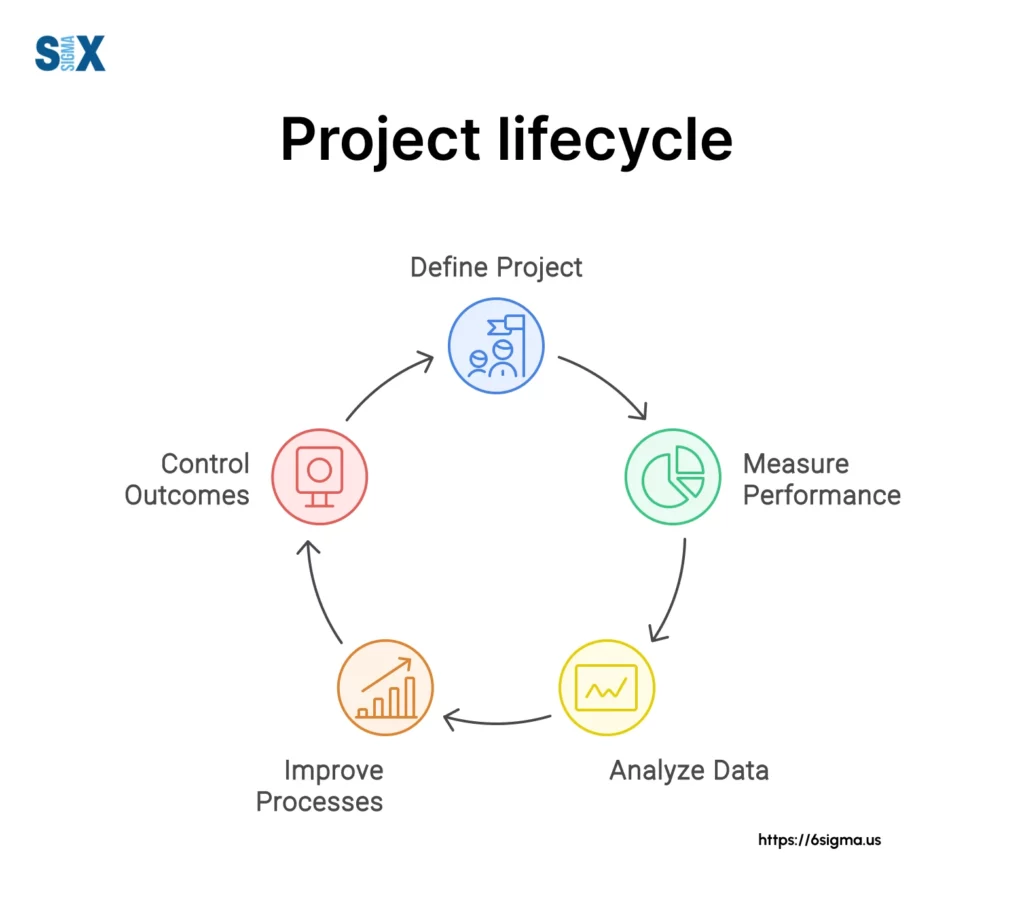
Essential Elements of Effective Project Management Framework
Mastering the essential elements of project management is key to navigating complex projects successfully.
Work Breakdown Structure (WBS)
The Work Breakdown Structure is a critical tool in project management.
In my workshops on Statistical Thinking and Business Process Charting, I always emphasize the importance of a well-constructed WBS.
A WBS is a hierarchical decomposition of the total scope of work to be carried out by the project team to accomplish the project objectives and create the required deliverables.
It organizes and defines the total scope of the project.
Key benefits of a WBS include:
- Providing a framework for detailed cost estimating and control
- Defining scope to help avoid scope creep
- Allowing for more accurate scheduling
- Clarifying work responsibilities
Gantt Charts and Milestone Planning with the Project Management Framework
Gantt charts and milestone planning are essential tools for visualizing project schedules.
In my work with companies like Xerox and Seagate, I’ve found these tools invaluable for communicating project timelines to stakeholders.
A Gantt chart is a bar chart that illustrates a project schedule. It shows the start and finish dates of the terminal elements and summary elements of a project.
Milestone planning involves identifying significant points or events in the project.
These tools help in:
- Showing the relationship between project activities
- Tracking progress
- Identifying potential bottlenecks
- Communicating the project schedule to stakeholders
Risk Assessment and Mitigation with the Project Management Framework
Risk management is a critical aspect of project management.
The risk management process typically includes:
- Risk identification
- Qualitative risk analysis
- Quantitative risk analysis
- Risk response planning
- Risk monitoring and control
Effective risk mitigation strategies can include risk avoidance, risk transfer, risk mitigation, or risk acceptance, depending on the nature and potential impact of the risk. A key technique in this process is root cause analysis, which helps identify the underlying issues that could lead to project risks.
Stakeholder Management and Communication Planning
Stakeholder management and communication are crucial for project success.
Effective stakeholder management involves:
- Identifying stakeholders
- Analyzing stakeholder interests and potential impact
- Developing strategies for effectively engaging stakeholders
A comprehensive communication plan should outline:
- What information will be communicated
- When it will be communicated
- How it will be communicated
- Who is responsible for the communication
Remember, effective communication is not just about disseminating information, but also about ensuring understanding and gathering feedback.
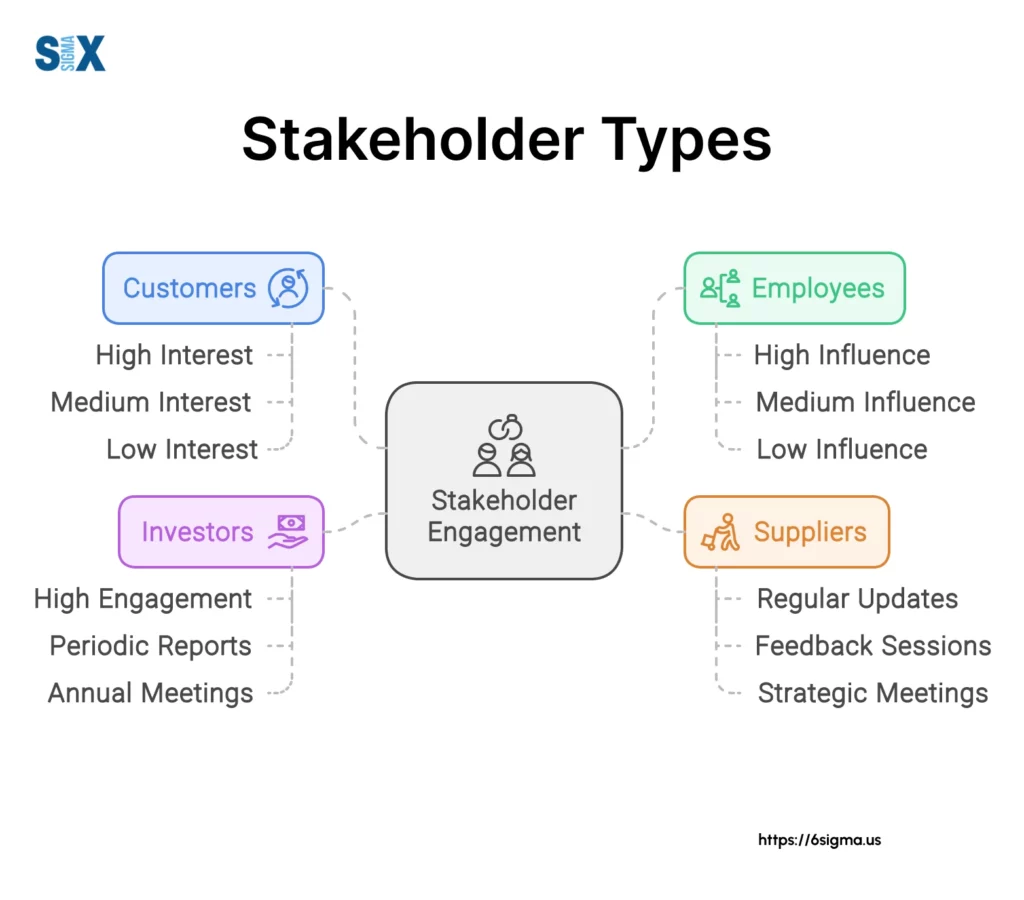
Implementing a Project Management Framework
Implementing a project management framework is a transformative process that can elevate an organization’s project delivery capabilities.
Choosing the Right Project Management Framework for Your Organization
Selecting the appropriate project management framework is crucial for organizational success.
Consider the following factors when choosing a framework:
- Organizational culture and structure
- Project types and complexity
- Team size and distribution
- Industry standards and regulations
- Client or stakeholder preferences
Remember, it’s possible to blend elements from different frameworks to create a custom approach that best suits your organization’s needs.
Role of the Project Management Office (PMO)
A Project Management Office (PMO) can play a crucial role in implementing and maintaining a project management framework.
In my experience working with large organizations like GE and Dell, I’ve seen how an effective PMO can drive project success across an entire organization.
To ensure project managers are well-equipped to adhere to these standards, many PMOs encourage training such as a six sigma green belt certification. This level of certification provides practical skills in process improvement and data analysis, which are critical for aligning projects with organizational goals.
Key functions of a PMO include:
- Developing and maintaining project management standards and methodologies
- Providing training and mentoring to project managers
- Managing shared resources across projects
- Monitoring compliance with project management standards
- Coordinating communication across projects
Change Management and Governance
Implementing a new project management framework often requires significant organizational change.
As someone who has led Six Sigma deployments, I understand the challenges of change management.
Key aspects of change management include:
- Communicating the need for change
- Identifying and addressing resistance
- Providing training and support
- Celebrating quick wins
- Reinforcing the change
Governance structures are crucial for ensuring the new framework is consistently applied.
This might include steering committees, regular audits, and performance metrics.
Tools and Software for Project Management
In today’s digital age, project management software can significantly enhance the implementation of a project management framework.
In my work with tech companies, I’ve seen how the right tools can improve efficiency and collaboration.
Popular project management tools include:
Microsoft Project
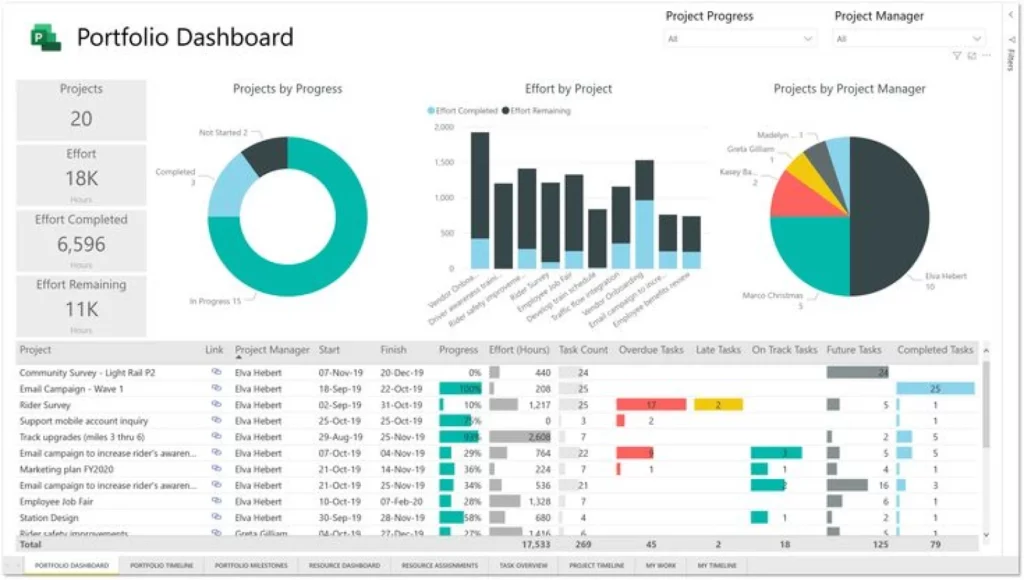
Jira
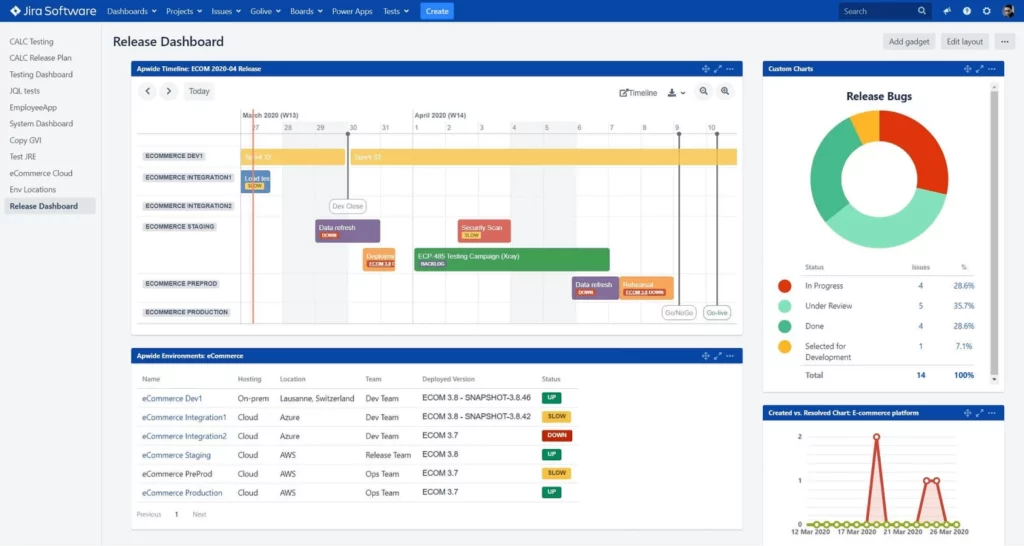
Trello
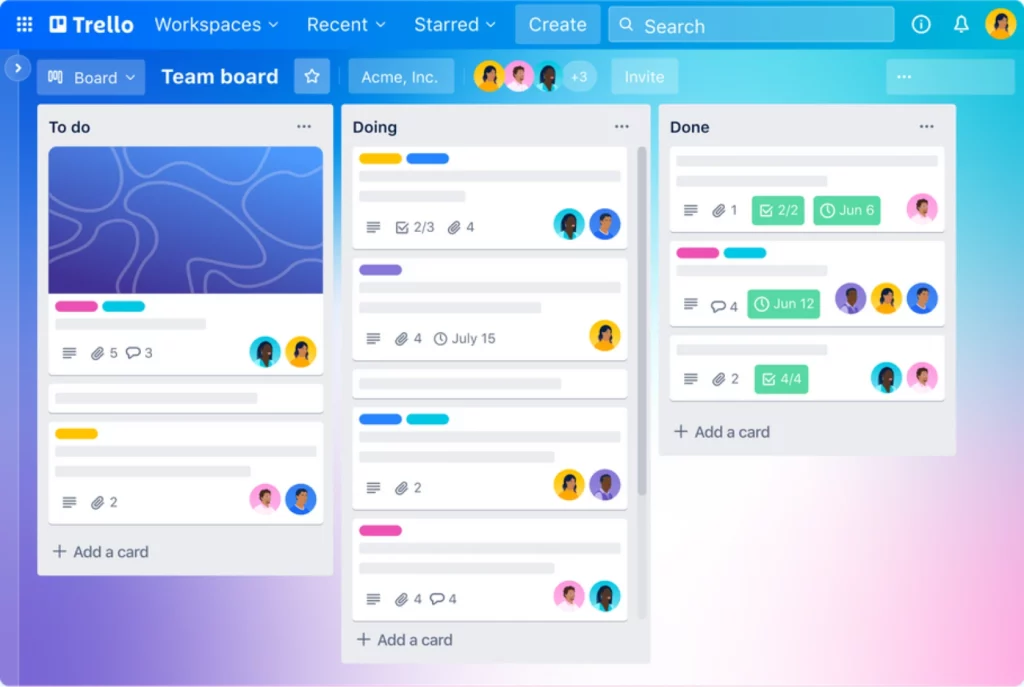
Asana
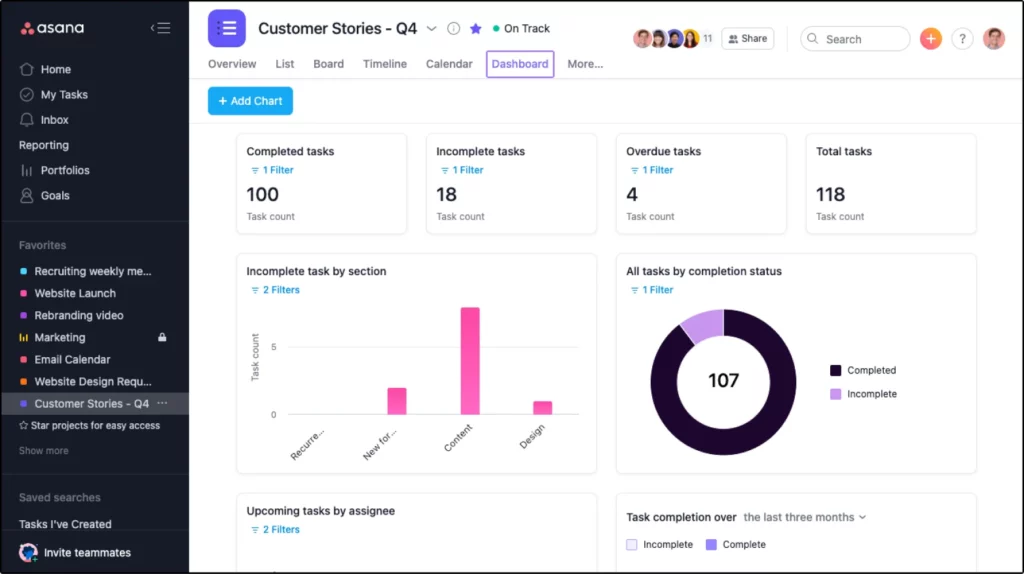
Basecamp
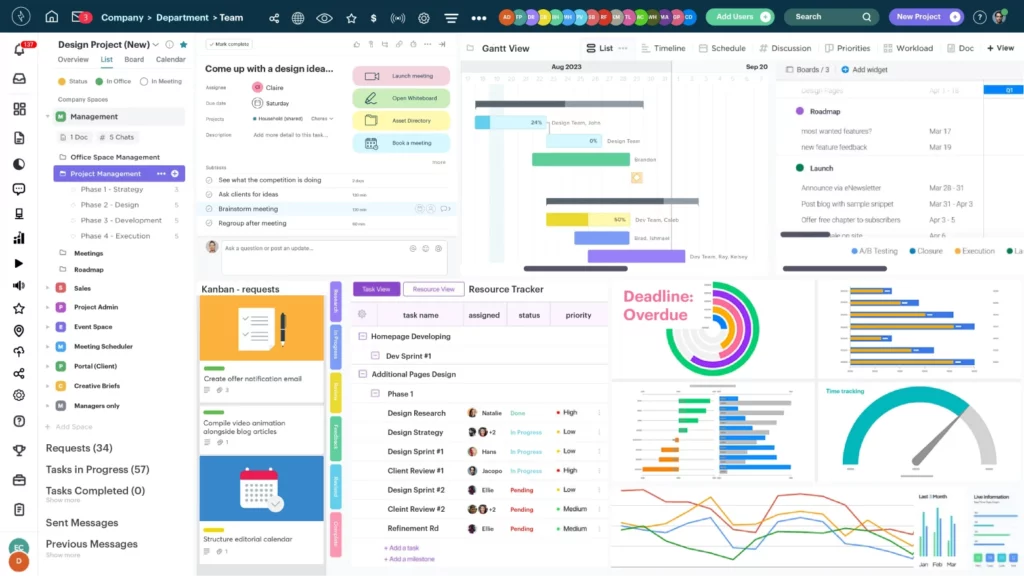
When selecting tools, consider factors such as ease of use, integration capabilities, scalability, and alignment with your chosen framework.
Advanced Techniques in Project Management Framework(s)
Advanced techniques in project management frameworks push the boundaries of traditional approaches, offering enhanced control and flexibility.
Earned Value Management
Earned Value Management (EVM) is a project management technique for measuring project performance and progress in an objective manner.
Key components of EVM include:
- Planned Value (PV): The authorized budget assigned to scheduled work
- Earned Value (EV): The measure of work performed expressed in terms of the budget authorized for that work
- Actual Cost (AC): The realized cost incurred for the work performed
EVM allows project managers to forecast project performance and make data-driven decisions.
Another advanced approach involves leveraging skills from a six sigma black belt certification, which equips project managers with expertise in statistical analysis and process optimization to enhance project outcomes.
Kanban Boards and Sprint Planning
Kanban and Sprint Planning are techniques often associated with Agile methodologies,
but I’ve found they can be valuable in various project management contexts.
Kanban boards provide a visual representation of work flow, helping teams:
- Visualize work
- Limit work-in-progress
- Manage flow
- Make process policies explicit
- Improve collaboratively
Sprint planning, typically used in Scrum, involves breaking work into fixed-length iterations (usually 1-4 weeks). This approach allows for regular reassessment and adjustment of priorities.
Maximizing Project Success with Project Management Frameworks
Throughout my career, I’ve seen firsthand how a well-implemented project management framework can transform an organization’s ability to deliver successful projects.
The key benefits include:
- Improved consistency in project delivery
- Enhanced communication and collaboration
- Better risk management
- More accurate estimations and planning
- Increased stakeholder satisfaction
- Greater alignment with strategic objectives
By providing a structured approach to project management, frameworks help organizations move from ad-hoc project execution to a more mature, predictable process.
As with any process, the implementation of a project management framework should be subject to continuous improvement.
Methodologies like Lean and Six Sigma are central to structured continuous improvement, and pursuing a six sigma certification can equip professionals with the necessary skills to lead these efforts effectively.
Consider the following for continuous improvement:
- Regularly review project outcomes and lessons learned
- Solicit feedback from project teams and stakeholders
- Stay informed about new methodologies and best practices
- Be willing to adapt the framework as organizational needs evolve
Remember, the goal is not to rigidly adhere to a framework, but to use it as a tool to enhance project success.
The most effective organizations are those that can balance structure with flexibility, adapting their approach as needed while maintaining core project management principles.
SixSigma.us offers both Live Virtual classes as well as Online Self-Paced training. Most option includes access to the same great Master Black Belt instructors that teach our World Class in-person sessions. Sign-up today!
Virtual Classroom Training Programs Self-Paced Online Training Programs






